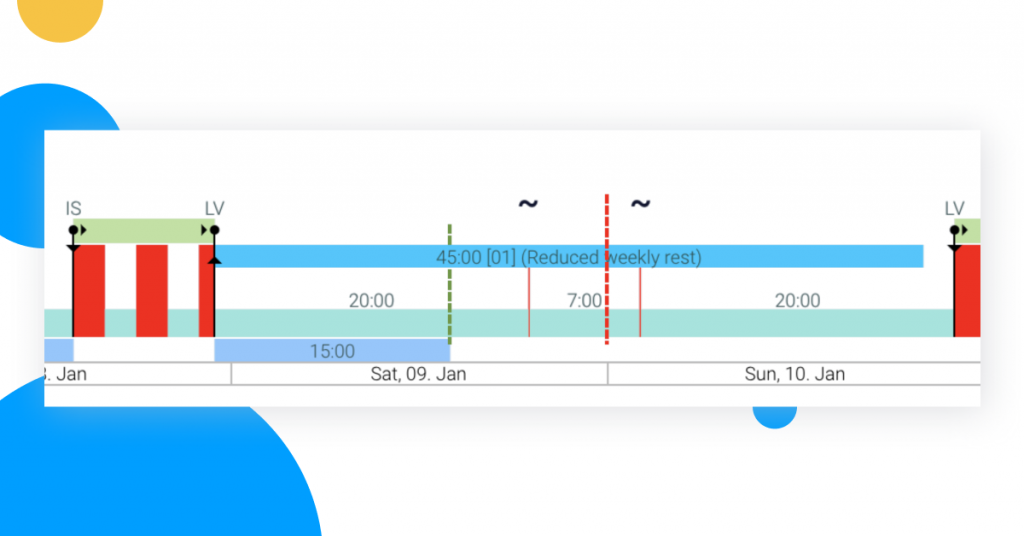
Mobility Package regulation: Rests on trains and ferries
At the end of 2020, we started a blog series about driving and rest time changes implemented by the Mobility Package. In this blog, we’re continuing it by looking at rests on trains and ferries.
As you might already know, you can spend reduced and regular weekly rests on a ferry. What nuances should you pay attention to when doing so? Let's go through the regulation changes and find out.
Daily rest on a ferry
Let's start with the basics and see what has stayed the same. Just as before the Mobility Package came into force, you can spend a daily rest on a train/ferry if you follow these rules:
You can interrupt the rest period twice (for embarking onto the train/ferry and disembarking);
The total time of interruptions cannot exceed 1 hour;
Make sure that all of the time you spend while waiting in the traffic jam/queue is registered as other work. Otherwise, it might be counted as rest and thus you would have interrupted the intended daily rest period more than twice;
The time spent driving on and off the train/ferry isn't counted in the rest time, so be careful with keeping track of the time;
The daily rest time on the ferry should be at least 11 hours;
You can also use a split daily rest of 3+9 hours where you can spend the 9 hour part on the ferry and split it twice for embarking/disembarking;
The rules of completing a daily rest within 24 hours after starting your work shift are still in place, so pay attention to when the 24h period ends and when your rest ends.
Reduced weekly rest on a ferry
The reduced weekly rest on a ferry/train works exactly the same way as a daily rest spent on a ferry/train. You can interrupt the reduced weekly rest of at least 24 hours twice, for a combined 1 hour, in order to embark and disembark the ferry/train. A sleeper cabin, bunk or couchette must be available during the reduced weekly rest period.
Regular weekly rest on a ferry
You can also spend a regular weekly rest on a ferry with one specific rule - the rest leg that you spend on the train/ferry should be at least 8 hours. A sleeper cabin, bunk or couchette must be available during the weekly rest period. The requirement of the ferry/train leg being at least 8 hours in length automatically disqualifies quite a few ferry routes around Europe.
This far the rules seem reasonably straightforward, but there are of course some edge cases. For example, the regulation defines a reduced weekly rest as a rest period which is less than 45 hours and 24 or more hours. The regulation also prohibits spending a regular weekly rest on a ferry, if the rest leg on the train/ferry is less than 8 hours. This leads to a situation where the rest can't be regular or reduced according to the definitions.
The way we look at this situation is that we have a reduced weekly rest period of 45 hours which should not be compensated and this is why we’ve added a special label - (Reduced weekly rest) - to weekly rest periods that indicate whether this is a regular or a reduced weekly rest period.

Although these rule changes aren’t very complex, the daily work of drivers can now be easily interrupted, if the drivers start using the options the new rules provide. The digital tachographs and smart tachographs don’t have built-in algorithms for handling the new changes and can provide wrong instructions for the drivers about when and what type of rest should be taken. This problem can be solved with tachograph file download and analysis tools such as Tachogram that allow drivers to precisely check their compliance with regulation at any moment.
If you haven’t already, you can try out Tachogram free of charge and find out how it helps to stay compliant with driving and rest time regulation by taking advantage of the 14-day trial period.